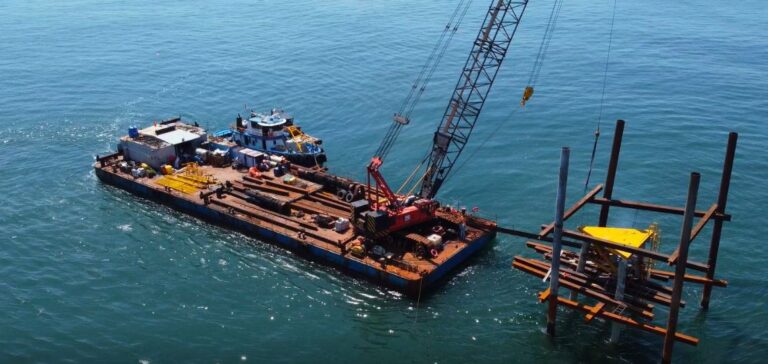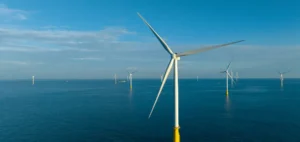Ben Tre, Mainstream Renewable Power and AIT Corporation’s offshore wind farm, reaches a major milestone. Both companies have installed a LiDAR (Light Detection and Ranging) unit. It is placed on a fixed platform, located 40 km off the Vietnamese province of Ben Tre. Thus, the LiDAR unit becomes the furthest platform from the Vietnamese coast.
Ben Tre, an important project for Vietnam
With the installation of this step, Ben Tre has reached a key stage in its development. The unit will record data via satellite for 18 months. Thus, it will provide valuable information about the wind conditions at sea. This data will allow the park to be scaled up.
Ben Tre will have a capacity of 500 MW. It should be operational in 2026. The wind farm is important for Vietnam’s energy transition. It could be a pioneer in the country and serve as a model for the development of other renewable energy projects in the country.
Bernard Caser, Mainstream’s Chief Operating Officer in the Asia Pacific region, comments:
“The Ben Tre project has the potential to play a pioneering role in Vietnam’s green energy future and will contribute to the Vietnamese government’s ambitions to install 7 GW of offshore wind before 2030. These ambitions are deeply aligned with Mainstream’s as we accelerate infrastructure investments around the world in renewable energy to combat global warming.”
Hoang Thanh Hai, president of AIT, is pleased:
“We are pleased to see this milestone achieved safely and on time and look forward to accelerating the development of this key project with Mainstream.”
Mainstream strengthens its presence in Vietnam
Mainstream has been operating in Vietnam since 2017. With Ben Tre, it strengthens its presence in the country.
The company intends to bring its extensive international experience in raising capital, but also its expertise in project development.
Regarding this offshore wind farm, it has signed a joint development agreement with AIT in 2020. Mainstream wants to take advantage of AIT’s market knowledge.
Together, they intend to participate in the country’s energy transition. Under the National Power Development Plan 8, 72.5 GW of offshore wind power should be developed to replace fossil fuels in Vietnam by 2050. Thus, the success of Ben Tre could encourage the multiplication of projects in this direction.





















